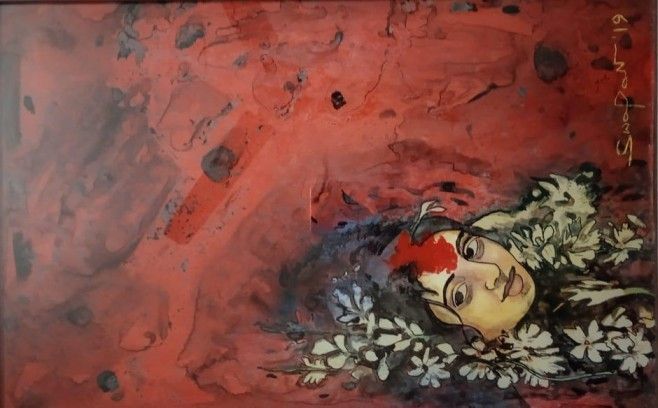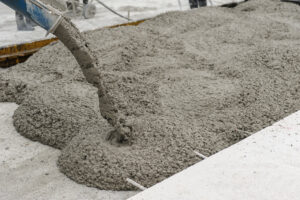The Revival and Modern Appeal of Madhubani Folk Art Painting
Madhubani folk art painting, a traditional art form that has its roots in the Mithila region of Bihar, India, has transcended time and geography to become a globally recognized and celebrated art form. From its beginnings as a rural practice used to adorn homes and temples during religious ceremonies, this vibrant and intricate style of painting has captured the attention of art lovers and collectors around the world.
In this article, we will explore how Madhubani folk art painting has evolved, the modern adaptations and techniques used by contemporary artists, and the role of platforms like Artrekha in bringing this timeless art to a global audience.
The Traditional Origins of Madhubani Folk Art Painting
Madhubani folk art painting is believed to date back to at least 2500 years, with its origins rooted in the cultural practices of the Mithila region. Traditionally, women in villages created these paintings on the walls of their homes and courtyards to celebrate religious and social occasions, such as weddings, births, and festivals. The art form was deeply symbolic, with motifs that included mythological stories, Hindu deities, nature, and fertility symbols, all rendered in vibrant colors and intricate geometric patterns.
What made Madhubani art so unique was its use of natural materials. Artists used pigments made from local plants, minerals, and other organic materials to create their bold and colorful designs. Brushes were often made from twigs or bamboo sticks, and some artists even used their fingers to apply the paint. This connection to nature is a defining characteristic of Madhubani art, imbuing the paintings with an organic, earthy quality that resonates with viewers to this day.
The Revival of Madhubani Folk Art Painting
For much of its history, Madhubani art was a local practice, passed down through generations of women within the Mithila region. However, the art form began to receive global attention in the 1960s when a major drought hit the region. The Indian government and local authorities encouraged women to transfer their traditional wall paintings onto paper as a way of generating income. This initiative not only provided a livelihood for many families but also sparked a revival of interest in Madhubani art.

Soon, art collectors and scholars from around the world began to take notice of the intricate patterns, vibrant colors, and cultural significance of Madhubani folk art painting. Artists who had previously created these works for personal or ceremonial use found new opportunities to showcase their talent on a global stage. Exhibitions and galleries around the world began to feature Madhubani paintings, bringing the art form to a wider audience.
Modern Adaptations and Contemporary Artists
While Madhubani folk art painting remains true to its traditional roots, contemporary artists have adapted the style to suit modern tastes and sensibilities. The introduction of synthetic colors, for example, has expanded the color palette, allowing for more vivid and long-lasting works of art. Artists now use paper, canvas, and even fabric as their canvas, creating versatile pieces that appeal to a global market.
Contemporary Madhubani artists have also experimented with new themes and subject matter. While traditional motifs like Hindu deities and nature scenes remain popular, many artists are using the style to comment on social and political issues. Themes such as environmental conservation, women’s empowerment, and human rights have found their way into Madhubani paintings, reflecting the changing times while preserving the essence of the art form.
Artists like Mahasundari Devi, Sita Devi, and Ganga Devi have played pivotal roles in promoting Madhubani art on the global stage. These women have not only preserved the traditional aspects of the art but have also been instrumental in adapting it to modern times. Their work has inspired a new generation of artists who are continuing to evolve the art form while staying true to its cultural roots.
Madhubani Folk Art Painting and Global Appeal
One of the most exciting aspects of the modern revival of Madhubani folk art painting is its growing global appeal. Art lovers around the world are drawn to the vibrant colors, intricate patterns, and deep symbolism that characterize Madhubani paintings. The art form’s ability to bridge the gap between tradition and modernity has made it a favorite among collectors, designers, and even casual enthusiasts.
The growing popularity of Madhubani art is also due in part to its versatility. The art form can be used in a wide range of applications, from home décor to fashion accessories. Madhubani paintings can be found on everything from sarees and scarves to handbags and wall tapestries. This adaptability has made Madhubani art a sought-after addition to contemporary living spaces and a popular choice for those looking to add a touch of Indian tradition to their homes.
The Role of Platforms like Artrekha
As Madhubani folk art painting continues to gain global recognition, platforms like Artrekha have played a crucial role in promoting the art form and connecting it to a wider audience. Artrekha, an online marketplace dedicated to showcasing traditional Indian art, provides a platform for Madhubani artists to reach customers from around the world. By offering a curated selection of authentic Madhubani paintings, Artrekha helps to preserve the cultural heritage of the art form while also providing artists with opportunities for financial sustainability.
Through platforms like Artrekha, art lovers can explore a wide variety of Madhubani folk art paintings, each one a unique reflection of the artist’s skill and creativity. The accessibility of these platforms has also allowed collectors to purchase authentic pieces directly from the artists, ensuring that the tradition of Madhubani painting continues to thrive.
Conclusion
Madhubani folk art painting has come a long way from its humble beginnings in the villages of Mithila. Today, it is a globally recognized art form that has captured the attention of collectors, artists, and enthusiasts from around the world. The revival of Madhubani art in the 20th century, coupled with modern adaptations and the growing influence of platforms like Artrekha, has ensured that this timeless art form remains relevant and vibrant in the contemporary art world.
As Madhubani folk art painting continues to evolve, it retains its deep cultural significance and connection to Indian traditions. Whether used to tell stories from ancient mythology, comment on modern social issues, or simply add beauty to a living space, Madhubani art continues to captivate audiences with its unique blend of tradition and modernity.














Post Comment